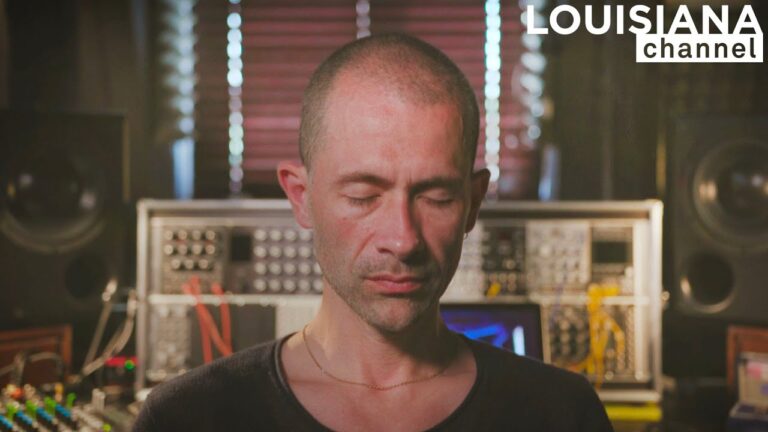
“When I press record, I accept whatever comes. And it is a gift when something unpredictable happens.” Danish artist Jacob Kirkegaard describes how he works with the sounds of the world. From border walls and abandoned spaces to the sounds of death.
Jacob Kirkegaard has been recording sound since the age of six. He explains that his objectives have been the same throughout his career: “To become part of the world through sound. To engage with the world through recording.” Not only does he use regular microphones, he also uses sensors which he places on different surfaces to listen from within something: “There’s always another world when you listen closer. When you go behind the immediate. And that I think is both very reassuring but also alienating. And I like that paradox.”
Opus Mors (2019) is a four-part series in which Jacob Kirkegaard investigates what happens to the body after death. You hear the recordings of a morgue, an autopsy, a cremation and finally the decomposition of a body. Kirkegaard explains that with Opus Mors, he tried to get to the core of what he does: “To really try to record some of the ultimate things in life, that we all have in common.” He argues that our language for death is restricted and that listening to the sound of the different processes can provide a new perspective on death.
For Membrane (2020) Jacob Kirkegaard travelled along the border wall between the United States and Mexico. In the installation, you hear the fence and barbed wire as if it was an instrument together with video recordings of the wall, which Kirkegaard believes has a sculptural dimension to it. The border between the two countries has long been a topic of discussion and Kirkegaard wanted to investigate what the wall itself had to say: “It has its own voice and language. It’s not a language that we can understand immediately.”
“Every room is full of sound,” says Jacob Kirkegaard. In 2005 he wanted to find out what the resonance of an abandoned space might sound like and immediately Chernobyl came to mind. Kirkegaard recorded a church, a swimming pool, a gym and an auditorium there. Kirkegaard recorded ten minutes within each space and then played the recording back into the room, layering the sound to create a unique tone emanating from a seeming void. “It was like a chord, its own chord,” Kirkegaard says and explains what working in a radioactive space was like: “It was like framing something I couldn’t see, smell or understand.”
Jacob Kirkegaard (b.1975) is a Danish artist best known for his sound installations. Kirkegaard focuses on the scientific and aesthetic aspects of sonic perception, exploring acoustic spaces and phenomena that usually remain imperceptible to the immediate ear. Kirkegaard’s sound works focus on investigations into the potential musicality in hidden sound layers in the environment. He holds an MA from the Academy of Media Arts in Cologne, Germany. In 2016 Kirkegaard was the sound-artist-in-residency at St. John’s College, University of Oxford, U.K. Kirkegaard has presented his works at galleries, museums, biennales and concert spaces throughout the world, including MoMA in New York, the Louisiana Museum of Modern Art and ARoS in Denmark, The Menil Collection and at the Rothko Chapel in Houston, The Sydney Biennale in Australia, Aichi Triennale in Nagoya, the Mori Art Museum in Tokyo, Japan.
Jacob Kirkegaard was interview by Roxanne Bagheshirin Lærkesen in July 2021 at his studio in Denmark.
Camera: Simon Wehye
Produced and edited by Roxanne Bagheshirin Lærkesen
Copyright: Louisiana Channel, Louisiana Museum of Modern Art, 2021
Supported by Den A.P. Møllerske Fond
#JacobKirkegaard #SoundArt #ContemporaryArt
FOLLOW US HERE!
Website: http://channel.louisiana.dk
Facebook: https://www.facebook.com/LouisianaChannel
Instagram: http://www.instagram.com/louisianachannel
Twitter: http://www.twitter.com/LouisianaChann
source